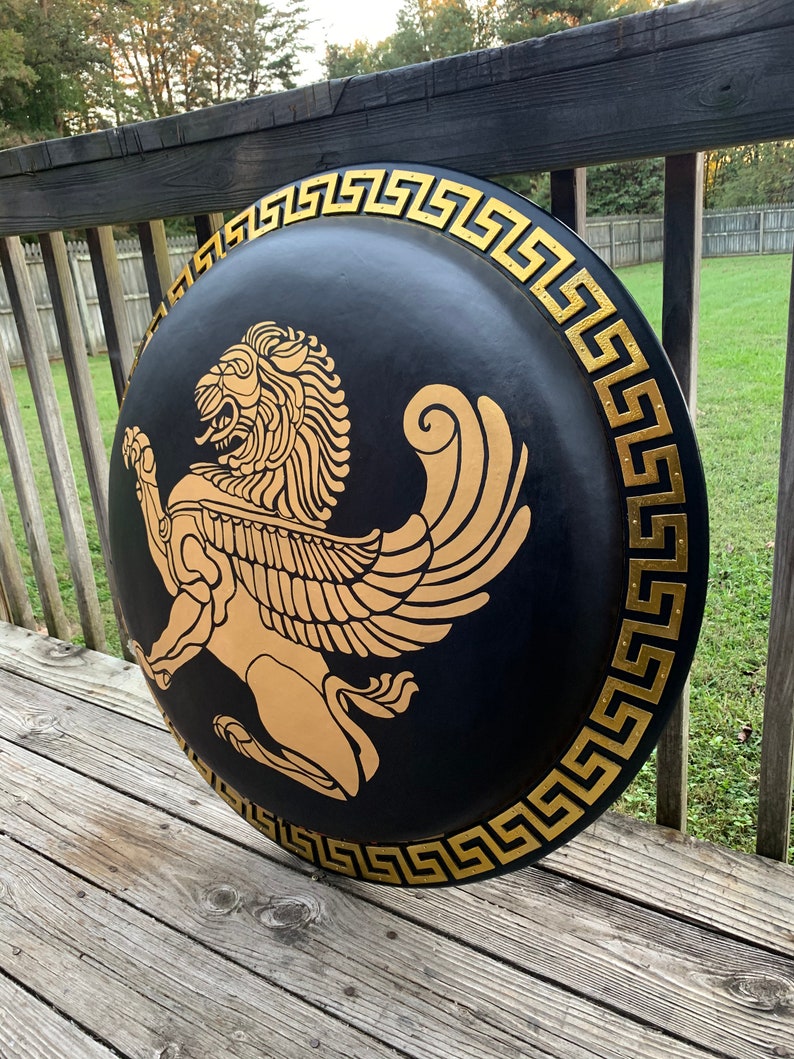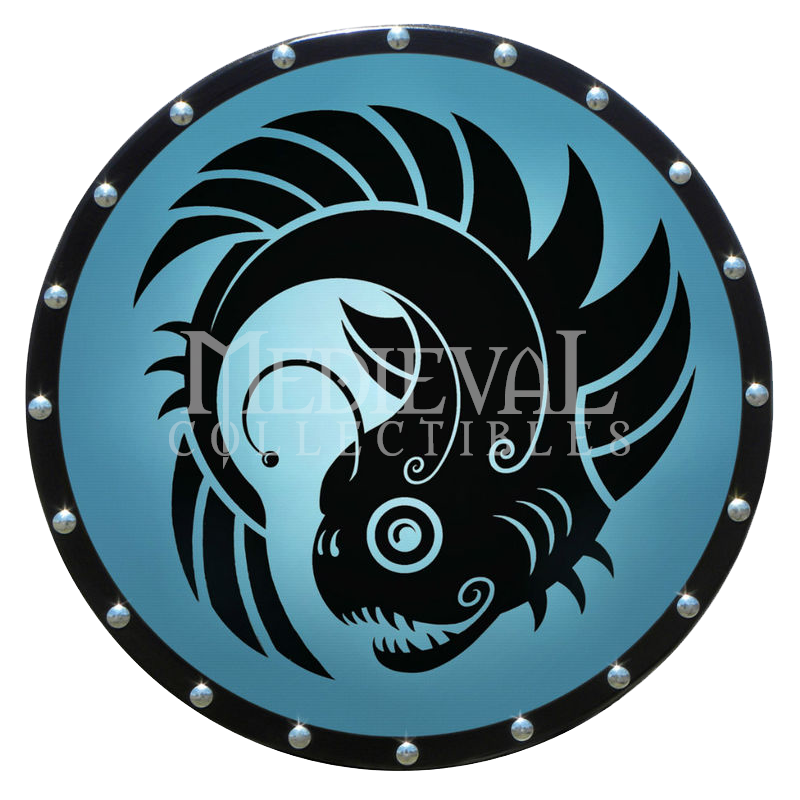
The exact time when hoplitic warfare was developed is uncertain, the prevalent theory being that it was established sometime during the 8th or 7th century BC, when the "heroic age was abandoned and a far more disciplined system introduced" and the Argive shield became popular. Hoplites on an aryballos from Corinth, ca. In later usage, the term hoplite is used to denote any armored infantry such as the Swiss mercenaries during the Burgundian Wars (1474–1477).
#Hoplite shield halloween full#
ὁπλίται hoplitai) derives from " hoplon" ( ὅπλον, plural hopla ὅπλα), the type of the shield used by the soldiers, although, as a word, "hopla" could also denote the weapons held or even full armament.

The word " hoplite" (Greek: ὁπλίτης hoplitēs pl. The Persian archers and light troops who had fought in the Battle of Marathon failed when their bows were too weak and incapable of penetrating the Greek shields and armour, and their own armour and shields could not stand up to the longer spears and swords of the Greeks. This new tactic proved to be a success during the Battle of Marathon in 490 BC and the Battle of Plataea in 479 BC, when the Greeks defeated the Persians. In 700 BC, a military innovation called the phalanx formation was introduced.

Hoplites generally received basic military training. They were primarily free citizens-propertied farmers and artisans-who were able to afford the bronze armor suit and weapons (estimated at a third to a half of its able-bodied adult male population). Their main tactic was the phalanx formation. Hoplites were citizen-soldiers of Ancient Greek city-states who were primarily armed with spears and shields.

Recreation of a 4th–3rd century BC hoplite, shown carrying an aspis shield (or hoplon). File:Ancient Greece hoplite with his hoplon and dory.jpg


 0 kommentar(er)
0 kommentar(er)
